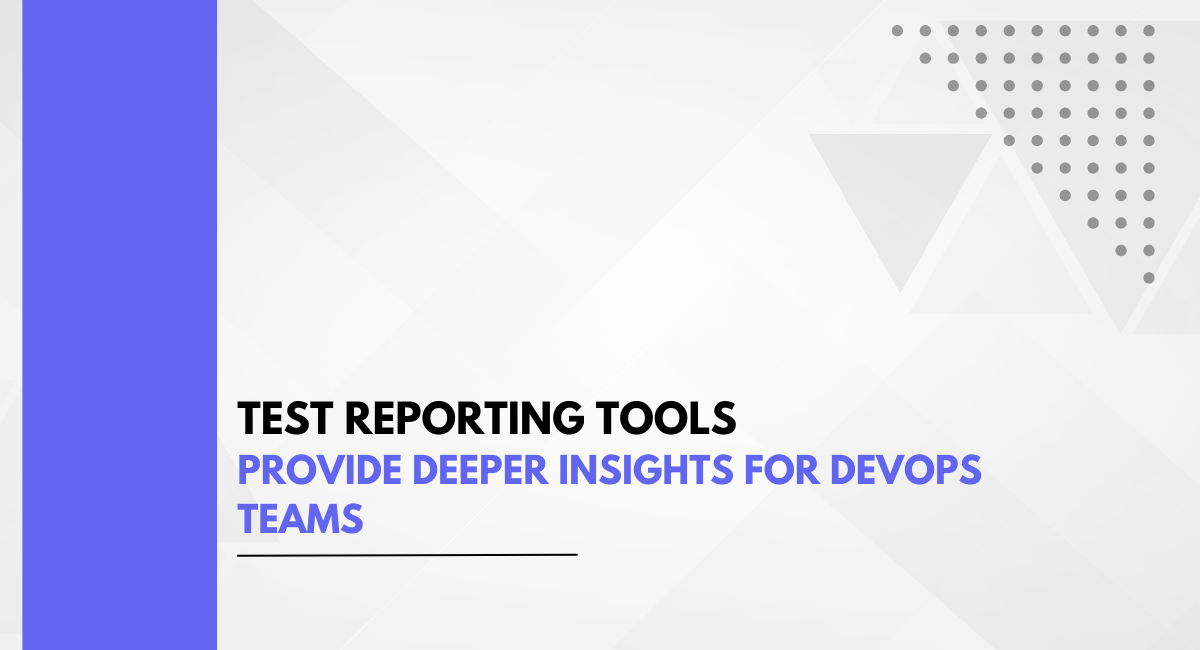Quick Listen:
In the fast-paced realm of software development, a single flaw can lead to significant revenue loss. Consider the e-commerce giant that suffered major financial setbacks when a glitch crashed their platform during a peak holiday sale.
For DevOps teams, the challenge is clear: deliver impeccable software at lightning speed. Enter test reporting tools dynamic platforms that go beyond mere bug tracking to provide real-time insights, optimize workflows, and enable data-driven decisions. These tools are revolutionizing the DevOps landscape, ensuring teams meet the unrelenting demands for speed and quality in today's competitive market.
The Evolution of Test Analytics in DevOps
Gone are the days of manual testing, bogged down by endless spreadsheets and fragmented reports. Modern test reporting tools have transformed into powerful hubs that integrate seamlessly with continuous integration and deployment (CI/CD) pipelines. The global market for these tools is on a steep upward trajectory, projected to reach $14.75 billion by 2030 with a compound annual growth rate (CAGR) of 9.71%.
This growth signals a paradigm shift: organizations are no longer just testing software but leveraging data to drive strategic decisions. Platforms like TestRail and Zephyr deliver real-time dashboards that visualize test outcomes, while open-source solutions like Allure offer customizable reporting for cost-conscious teams.
Artificial intelligence is also making its mark, with predictive analytics identifying potential issues before they escalate into costly failures. Observability platforms, such as Splunk and Grafana, enhance this trend by providing a comprehensive view of system performance throughout the development lifecycle.
Real-World Impact: Success Stories in Test Reporting
These advancements are not just theoretical they're solving critical challenges in high-stakes environments. For instance, a fintech company significantly reduced production defects by adopting real-time test analytics integrated with Jenkins, enabling early issue detection and saving hours of rework. Similarly, a major e-commerce platform streamlined its release cycles by using automated defect tracking to enhance collaboration across developers, testers, and operations teams.
These real-world examples highlight the power of modern DevOps, where cross-functional synergy is paramount. Features like trend analysis and performance benchmarking allow teams to identify patterns, prioritize fixes, and deliver robust software. The software testing and QA services market is expected to soar to $115.4 billion by 2032, growing at a CAGR of 13%, underscoring the indispensable role of these tools in ensuring software quality, reliability, and performance.
Overcoming Challenges in Test Reporting Implementation
Despite their transformative potential, test reporting tools come with challenges. Integrating them into existing workflows, particularly with legacy systems, can be daunting, often leading to data overload if misconfigured. Dashboards may generate confusing metrics without proper setup, obscuring rather than clarifying insights.
The learning curve for advanced features, such as AI-driven test case optimization, requires skilled personnel to interpret outputs effectively. Over-reliance on automation without human oversight can also lead to misleading insights. To mitigate these risks, teams should start with scalable tools, prioritize robust vendor support, and invest in comprehensive training. Success lies not in adopting the most advanced platform but in tailoring it to fit specific team needs.
Driving Efficiency and Innovation Through Test Insights
Test reporting tools are efficiency powerhouses, cutting through complexity to pinpoint bottlenecks and enhance test coverage. By automating repetitive tasks like defect tracking, they free teams to focus on innovation rather than constant troubleshooting. The business benefits are compelling: faster time-to-market, improved customer satisfaction, and fewer costly defects.
The automation testing market, valued at $8.52 billion in 2018, reached $19.27 billion by 2023, driven by its high return on investment (ROI). Beyond efficiency, these tools foster innovation. Predictive analytics can preempt production issues, while integration with DevSecOps platforms strengthens security testing a critical need as cyber threats grow more complex.
The penetration testing market is projected to grow to $8 billion by 2035 at a CAGR of 11.03%, reflecting the urgent need to embed security into development pipelines. For companies navigating market pressures and regulatory requirements like GDPR, data-driven DevOps is a strategic advantage.
The Future of Test Reporting Tools: A Data-Driven Horizon
The future of test reporting tools is vibrant, with experts forecasting deeper AI integration, where machine learning not only detects defects but proposes real-time solutions. Enhanced observability will provide end-to-end traceability, from code commit to production deployment. As development cycles shorten and customer expectations rise, these tools will be critical for maintaining agility.
An industry analyst from Research and Markets notes, “The strategic value of test analytics lies in its ability to align quality with business goals, delivering software that fuels growth.” The test and measuring tools market, projected to reach $45.2 billion by 2032 with a CAGR of 5.3%, reflects a growing demand for precision and reliability. To stay competitive, DevOps teams must invest in scalable tools, prioritize seamless integration, and cultivate a culture of continuous improvement.
A New Era for DevOps
In a world where software underpins everything from finance to retail, test reporting tools are not just technical assets they're critical drivers of success. They empower teams to work smarter, deliver faster, and create software that exceeds expectations.
For teams still grappling with manual processes or fragmented tools, the path forward is clear: evaluate platforms that align with your workflow, train your team to leverage them effectively, and embrace a data-driven approach. The stakes are high, but the rewards faster releases, happier customers, and robust software are worth it. As the DevOps landscape evolves, test reporting tools are not just keeping pace they're setting the standard for excellence.
You may also be interested in: A Best Guide for Performance Testing: K6 vs JMeter
Book a Demo and experience ContextQA testing tool in action with a complimentary, no-obligation session tailored to your business needs.
